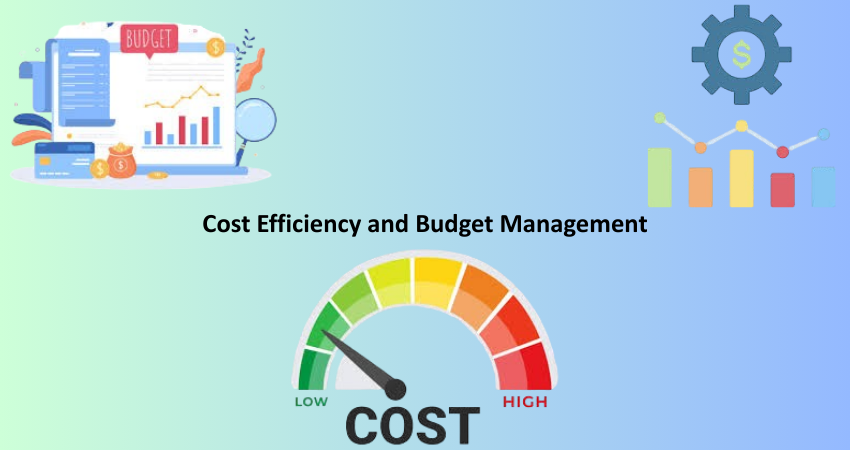
Introduction
One of the many issues that budding enterprises encounter is scarce funding, limited presence of team members, and shorter timeframes. There would always be the urgency of making something quickly and iterating it based on user feedback, not to mention, the competition actually calls for just getting things done quickly through very efficient and flexible development avenues. Hiring a full-stack developer is among the best things that a startup can do in this context; it is one such person who knows the ins and outs of front-end and back-end. The biggest difference is such an employee can handle a range of technical responsibilities, which can be a lifeline for a startup trying to develop and scale a digital product without stretching resources too thin.
Full-stack developers have more skills than they can be absorbed into a narrower space best suited for agile, fast-paced environments of startups. They can create the user interface; they can manage databases; they can configure servers; they can integrate APIs; and all done while doing justice to the integrated vision of the product. These freedoms bring autonomy and flexibility that curtail the need for small specialized teams and keep startups agile. In this article, we will look at such specific ways in which full-stack developers help startups with kept lean through cost efficiency, faster development cycles, and improved collaboration.
Versatility Across the Development Stack
Handling Front-End and Back-End Tasks
Indeed, it is apparent that full-stack developers have tremendous value to offer startups in that they work with both front- and back-end tasks. Startups can truly focus on even a single full-stack expert to perform UI/UX design, front-end scripting, server logic, and database management, as opposed to hiring separate experts for each task. This lowers overhead, streamlines recruitment, and helps create a more cohesive vision for the product. Full stack developers understand the entire data-flow and interaction process-from browser to database-and can design solutions that are functional and pleasant to use.
Their dual expertise allows for seamless transitions between client-side and server-side responsibilities. This agility ensures that the developer can fix front-end bugs that depend on back-end responses or optimize server logic based on how the UI is behaving. In the startup world, where time and money are at a premium, this level of adaptability can mean the difference between meeting a product milestone or missing a crucial release window. Those involved in both sides of the stack make development a much more cohesive and adaptable process.
Bridging the Design and Development Gap
Full-stack developers have significantly contributed in forming a bridge between design and implementation. In many startups, the distinction between designers and developers is often blurred because of lack of personnel. A full-stack developer who understands design concepts like usability, accessibility, and responsiveness will act accordingly and apply these ideas when turning mockups to live features with the highest level of accuracy and efficiency possible. They can leverage CSS frameworks, responsive layouts, and front-end JavaScript libraries like React or Vue.js to create intuitive interfaces alongside the branding and user goals associated with the startup.
Since they have knowledge about back-end systems, they further apply interfaces with dynamic data and functionality which reduces that friction usually seen in handovers between design and engineering. Besides, they also provide real-time feedback to designers about what is technically achievable and would recommend changes that can enhance performance or maintainability. With this, iterations become quicker but more polished end-products are produced. Their ability to think like both designers and engineers makes them a very strategic asset in lean environments where roles overlap.
Cost Efficiency and Budget Management

Reducing Hiring and Payroll Costs
The cost benefits of hiring full-stack developers are far more than hiring an entire team of specialized ones. Rather than hiring separate individuals for front-end, back-end, DevOps, and database work, the startup hires one or two full-stack persons to do various works. This consolidation means lower payroll costs and greater manageability for HR, thereby keeping the development process on budget. For bootstrap or those under very thin funding, even lesser saving on payroll costs becomes critically important for their sustainenance.
In addition, full-stack developers, as a rule, lessen dependency on outside resources such as contractors. Their wide-ranging skill set allows them to have projects done in-house that otherwise could be sent to third-party vendors that charge high fees. This autonomy also allows a quicker turnaround time and deeper knowledge of the codebase of the product. When hiring redundancies are minimized and responsibilities are pooled, a startup is left with more funds to devote to product innovation, marketing, or customer acquisition-all of which are critical in early-stage growth.
Minimizing Tooling and Infrastructure Expenses
Fortunately for startup teams, full-stack developers come equipped with a stock of tools and frameworks they know rather well to avoid expensive trial and error. It doesn’t matter whether one’s consideration involves libraries, platforms, or even third-party services. They know where to find the real gems with respect to specific conditions, which helps save on their software licensing or infrastructure costs. For example, they might choose an open-source way instead of a more expensive SaaS solution or introduce a lighter server configuration that meets the performance needs without overspending on cloud resources.
They are also able to design systems that would successfully scale, thus eliminating most of the re-engineering as the startup continues to grow. They could have built server environments designed to balance performance and cost, set up continuous automated testing or CI/CD pipelines and server environments. In designing lean infrastructure upfront, a full-stack developer can ensure that costs do not balloon with the addition of new features. This long-term foresight is essential for startups that are stretching dollars and at the same time building solid yet scalable platforms.
Accelerated Development Cycles
Rapid Prototyping and MVP Launches
One of the major advantages of having a full-stack developer on board is moving faster from concept to prototype. The startup culture often demystifies the speedy launch of Minimum Viable Products (MVPs) to collect user feedback, win over investors and demonstrate product-market fit: a full-stack developer can take a business idea transformed into wireframes or ragged designs and apply both front-end and back-end interactions needed in an MVP.
With this holistic approach, a startup gets to speed through development sprints with less delay than trying to coordinate across several specialized teams. A single developer would, properly maintain control of the codebase, hence fewer integration problems and adhering to consistent design philosophies. Additionally, the streamlined workflow cuts out delays typical with handoffs between the front-ends and back-end teams. This has made the startup able to iterate at an accelerated pace based on user feedback and make decisions based on data without the bottleneck of departmental dependencies.
Continuous Iteration and Agile Methodology
It is true that a full stack developer is mostly a great fit for Agile environments characterized by continuous iterations and rapid releases. The overall knowledge across the whole tech stack helps him to perform changes and deploy them whenever there is a business requirement that rapidly changes. This brings about flexibility in terms of test-driven development, A/B testing, and having a quick turnaround period for bug fixes-all central to the lean startup model.
They take care of the project developing with project schedule and scope since they would be functioning all across sprints, managing the version control system, and maintaining development pipelines. This much would do away with needing a plethora of roles coordinating changes and thereby allow full-stack developers to respond to new requirements or market changes in near real-time. Such is valuable in quick-moving markets where being first or fastest could literally mean the difference between a product’s success and failure. Full stack talent startups can always remain flexible agile, they can pivot as needed and meet the demands of an ever-evolving digital landscape.
Enhanced Team Collaboration and Communication
Acting as Technical Liaisons
In the small worlds of startups, clarity and high quality of communication about business, design, and development functions are essential. Full-stack developers act as linking intermediaries between these domains as they have vast knowledge concerning the different interconnected parts of the product. Translating business requirements into technical solutions and vice versa means that they will assist the nontechnical persons in understanding what is feasible at what time.
Because of their interdisciplinary expertise, they are called into planning meetings, product roadmapping, and strategy discussions. Consequently, they assist with determining priority for features concerning developer complexity and availability of resources. Such type of strategic analysis provides opportunities to the startups for making sound decisions in alignment with their business objectives and what is technically feasible. Lessening possible friction in the internal communications around full-stack developers enhances their culture as a team that reduces silos and increases goal-oriented team spirit.
Supporting Cross-Functional Roles
In startups, you’ll typically find members of a team required to wear many hats, and full-stack developers are, therefore, suited for cross-functional roles. They can assist with DevOps tasks, join discussions on UI/UX, or do some simple quality assurance testing. This flexibility guarantees that any bottlenecks in development essential for the project won’t come from a specific role. Take, for example, if a front-end designer is not available; the full-stack developer can come in and make changes to layouts or visual parameters without waiting for external input.
The result is a culture of collaboration nurturing a team atmosphere where skills overlap and knowledge is being shared. Hence, dependencies on single members of the team can be reduced, allowing for a better approach to working as a team to resolve challenges. It’s a kind of culture that promotes learning so that junior developers can gain best practices from a full-stack mentor. This creates a more flexible, empowered team that can navigate the whims of startup life with confidence and cohesion.
Scalability and Long-Term Vision

Building for Growth from Day One
Scalability is a significant concern for any startup that wants to move from initial success toward long-term sustainability. Full-stack developers can contribute to achieving this by making systems architected to scale easily and are also maintainable. Understanding both client-side and server-side constraints, they are able to create codebases that can evolve with minimal refactoring. A robust system for scalability would include developers who use modular frameworks, implement RESTful APIs, and create database schema ready for scaling.
Startups usually experience the challenge of scaling fast once they have a market fit. A full-stack developer who anticipates future growth means that the system can take care of handling increased loads of users, data, and features. Instead of scrambling to rebuild under pressure, a startup with proactive development practices can scale gracefully. This kind of foresight will serve to save precious man-hours later in the design cycle as well as provide good peace of mind to investors and stakeholders that there exists a sustainable technical backbone for the product.
Mentoring and Team Expansion
With expansion, the startup is now hiring more specialized developers, and the full stack professionals frequently begin to take on mentoring and leadership roles. These developers carry extremely broad ideas and very well accommodate the onboarding of new team members and the establishing of coding standards. They may assist in defining development workflows, enforce best practices, and ensure cohesion of the stack with the rapidly evolving team.
Such mentorship fast-tracks the ramp-up period of new hires while maintaining clarity of the startup vision and assuring code quality. Above all, it gives full-stack developers the opportunity to evolve into lead engineer or even CTO positions as the organization matures. Their initial contribution conforms for continuity and institutional knowledge in a way that becomes extremely useful in periods of rapid growth. This makes the full-stack developers a double-edged sword that helps startups remain lean during the early days while also enabling sustainable scaling and building leadership over time.
Conclusion
In the fast thrust of super-speed, scarcities in the startup world emphasize whether this efficiency and versatility may save one from the pangs of survival or triumph. For them, the Multilingualism of full-stack development becomes the best-place to put a price tag on what could be the most effective low-cost converters in strategic-facing operations. MVPs to Hiring and Mugshots and Team Communication to Long-Term Planning can affect any aspect of development.
Investing in full-stack talent, as such, will give a startup a rare ally who can don multiple hats while torch-bearing innovation across the complete product lifecycle. These developers stitch together vision and execution, ensuring that great ideas become sound, scalable, and user-friendly products. For a startup, this means that hiring full-stack developers is not only important, but fundamentally saves time and costs by keeping the business agile and impactful through small resources.